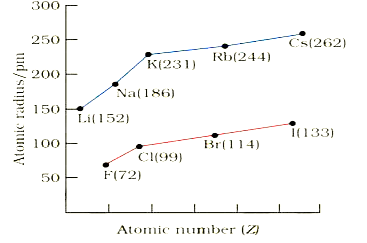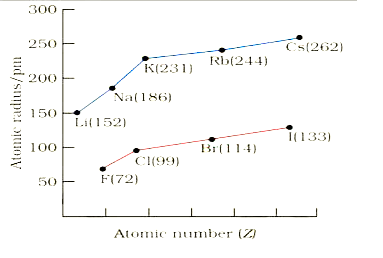A disease which is due to hyperthyroidism, characterised .by enlargement of thyroid gland, protrusion of eye ball, increased BMR and weight loss is called
Exophthalmic goitre
Simple goitre
Grave’s disease
Both A and C
The correct Answer is:D
Exophthalmic Goitre or Grave's disease-Exophthalmic goitre is the form of hyperthyroidism, characterised by enlargement of thyroid gland, protrusion of eye ball, increased BMR and weight loss also called Grave's disease.
Topper's Solved these Questions
- BOOK - A2ZCHAPTER - CHEMICAL COORDINATION AND INTEGRATIONEXERCISE - Section A : Topicwise Questions Topic 3 : Thymus And Adernial Gland37videos
CHEMICAL COORDINATION AND INTEGRATION
- BOOK - A2ZCHAPTER - CHEMICAL COORDINATION AND INTEGRATIONEXERCISE - Section A : Topicwise Questions Topic 4 : Pancrease , Testis And Ovary23videos
CHEMICAL COORDINATION AND INTEGRATION
- BOOK - A2ZCHAPTER - CHEMICAL COORDINATION AND INTEGRATIONEXERCISE - Section D : Chapter-end Test50videos
CHEMICAL COORDINATION AND INTEGRATION
- BOOK - A2ZCHAPTER - CELL: THE UNIT OF LIFEEXERCISE - Section D Chapter-end Test50videos
CELL: THE UNIT OF LIFE
- BOOK - A2ZCHAPTER - Digestion and AbsorptionEXERCISE - Section D : Chapter-end Test50videos
Digestion and Absorption
Similar Questions
Development of Goitre (enlarged thyroid gland) is mainly due to deficiency of
View SolutionA is an age related disorder characterised by decrease in bone mass and increased chances of fracture, Decreased level of B a common cause of this disease. Select the option which correctly fill the blanks A and B respectively.
View Solution
Knowledge Check
- Question 1 - Select One
Which of the following statements are correct ?
1. The hormone responsible fore maintaining the diurnal rhythm of the body is secreted by a gland situated on the dorsal side of thee forebrain .
2. Exophthalmic goitre is characterized by protrusion of eyeballs , weight loss , enlargement of the thyroid gland and decreases basal metabolic rate .
3. Addison's disease occurs due ti decreased production of hormones from the outer part of the adrenal gland.
4. Hyper secretion of parathormone cause an increase in the deposition of calcium in bones .A1, 2 and 3B2, 3 and 4C1 and 3D2 and 4 - Question 2 - Select One
Which of the following diseases is not related to thyroid gland?
AMyxoedemaBAcromegalyCCretinismDGoitre - Question 3 - Select One
An autoimmune disease in which the body destroys the thyroid gland is:
ACretinsimBMyxoedemaCHashimoto's diseaseDSimmond's disease
A dental disease characterised by motting of teeth is due to presence of a certain chemical element in drinking water. Which is that element?
View SolutionA dental disease characterised by motting of teeth is due to presence of a certain chemical element in drinking water. Which is that element?
View SolutionMetallic Character
The ability of an atom to donate electrons and form positive ion (cation) is known as electropositivity or metallic character. Down the group, metallic character increases due to increase in atomic size and across the period, from left to right electropositivity decreases due to decrease in atomic size.
Non-Metallic Character
The ability of an atom to accept electrons to form a negative ion (anion) is called non-metallic character or electronegativity. The elements having high electro-negativity have a higher tendency to gain electrons and form anion. Down the group, electronegativity decreases due to increase in atomic size and across the period, from left to right electronegativity increases due to decrease in atomic size

Which of the following reason correctly justifies that “Fluorine (72pm) has smaller atomic radius than Lithium (152pm)”?View SolutionMetallic Character
The ability of an atom to donate electrons and form positive ion (cation) is known as electropositivity or metallic character. Down the group, metallic character increases due to increase in atomic size and across the period, from left to right electropositivity decreases due to decrease in atomic size.
Non-Metallic Character
The ability of an atom to accept electrons to form a negative ion (anion) is called non-metallic character or electronegativity. The elements having high electro-negativity have a higher tendency to gain electrons and form anion. Down the group, electronegativity decreases due to increase in atomic size and across the period, from left to right electronegativity increases due to decrease in atomic size

Which of the following correctly represents the decreasing order of metallic character of Alkali metals plotted in the graph?View SolutionMetallic Character
The ability of an atom to donate electrons and form positive ion (cation) is known as electropositivity or metallic character. Down the group, metallic character increases due to increase in atomic size and across the period, from left to right electropositivity decreases due to decrease in atomic size.
Non-Metallic Character
The ability of an atom to accept electrons to form a negative ion (anion) is called non-metallic character or electronegativity. The elements having high electro-negativity have a higher tendency to gain electrons and form anion. Down the group, electronegativity decreases due to increase in atomic size and across the period, from left to right electronegativity increases due to decrease in atomic size

Which of the following has highest electronegativity?View Solution

